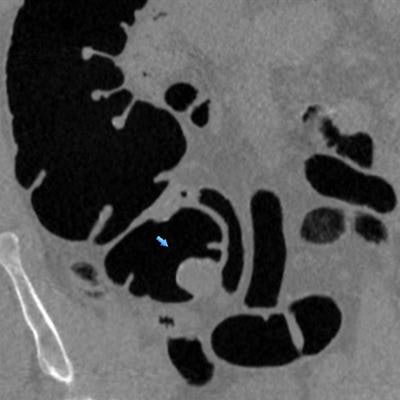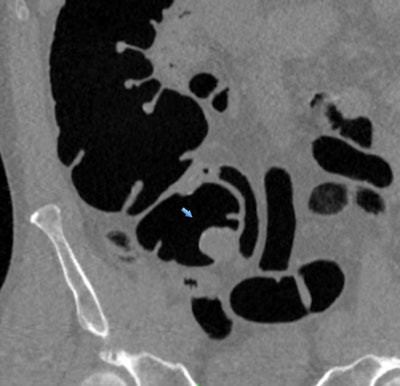
Colorectal cancer screening with CT colonography (CTC) had a higher cancer detection rate in older individuals compared with younger people in a new study, published in the American Journal of Roentgenology. Researchers believe the findings could support a renewed push for Medicare reimbursement of CTC screening.
The U.S. Centers for Medicare and Medicaid Services (CMS) currently does not cover payment for colorectal cancer screening with CTC. Though CT colonography has recognition from the U.S. Preventive Services Task Force (USPSTF) and the American Cancer Society as an accepted screening test for colorectal cancer, payment for the screening technique is still not covered by CMS.
 Dr. Perry Pickhardt.
Dr. Perry Pickhardt.But researchers from the U.S. and Italy offered evidence suggesting it should in this new meta-analysis.
A primary reason for the decision by CMS not to offer this service to Medicare patients is a supposed lack of generalizable evidence regarding the effectiveness of CT colonography for the Medicare population, lead author Dr. Perry Pickhardt told AuntMinnie.com. Pickhardt is a member of the American College of Radiology (ACR) Colon Cancer Committee and chief of gastrointestinal imaging at the University of Wisconsin.
Believing that ample data already existed that simply needed to be aggregated and analyzed, Pickhardt and colleagues examined the results of 34 studies published between January 1994 and August 2017 that included 18,798 seniors who underwent CTC screening for colorectal cancer. CTC's positive screening rates for large polyps or cancers ranged from 9% to 31%, with a sensitivity of 93%, and it had a positive predictive value of 84.3% for advanced colorectal cancer (AJR, April 18, 2018).
 CT colonography reveals a large tubulovillous adenoma (2.3 cm) that was subsequently confirmed with colonoscopy. Image courtesy of Dr. Perry Pickhardt.
CT colonography reveals a large tubulovillous adenoma (2.3 cm) that was subsequently confirmed with colonoscopy. Image courtesy of Dr. Perry Pickhardt.In addition, the researchers found a statistically significant increase in cancer detection rates for Medicare-age individuals (65 years and older) compared with younger adults.
| CT colonography cancer detection in seniors vs. nonseniors |
|||
| Nonseniors | Seniors | p-value | |
| Polyps and masses > 10 mm |
9.2% | 12.2% | 0.002 |
| Advanced cancer | 6.9% | 10.1% | < 0.001 |
The cancer detection rates increased even more to 14% (p = 0.013) for patients who demonstrated symptoms of cancer before undergoing screening and to 32.8% (p < 0.001) for those with positive results on fecal occult blood tests.
To boost the cost-effectiveness of CTC screening without missing cancerous lesions, the group settled on a cutoff size of 10 mm for lesions requiring follow-up colonoscopy. This threshold had a high sensitivity for cancer detection and a high yield for advanced cancer while also keeping the referral rate after screening to below 10% -- making it highly cost-effective, Pickhardt said.
"Assuming there are no 'hidden agendas,' these results should open the door for reconsideration of the national coverage determination for CTC screening of Medicare beneficiaries by the CMS," he said.
Recently, Pickhardt and colleagues completed another meta-analysis on extracolonic findings detected with CTC screening (currently pending publication) to help satisfy any lingering concerns the CMS may have in terms of evidence gaps supporting CTC screening.
"With the cumulative data provided by these two meta-analyses, I see no legitimate reason why CMS wouldn't initiate coverage for CTC screening," he said. "It is our hope that this is the last piece to the puzzle."




















